Most Cited
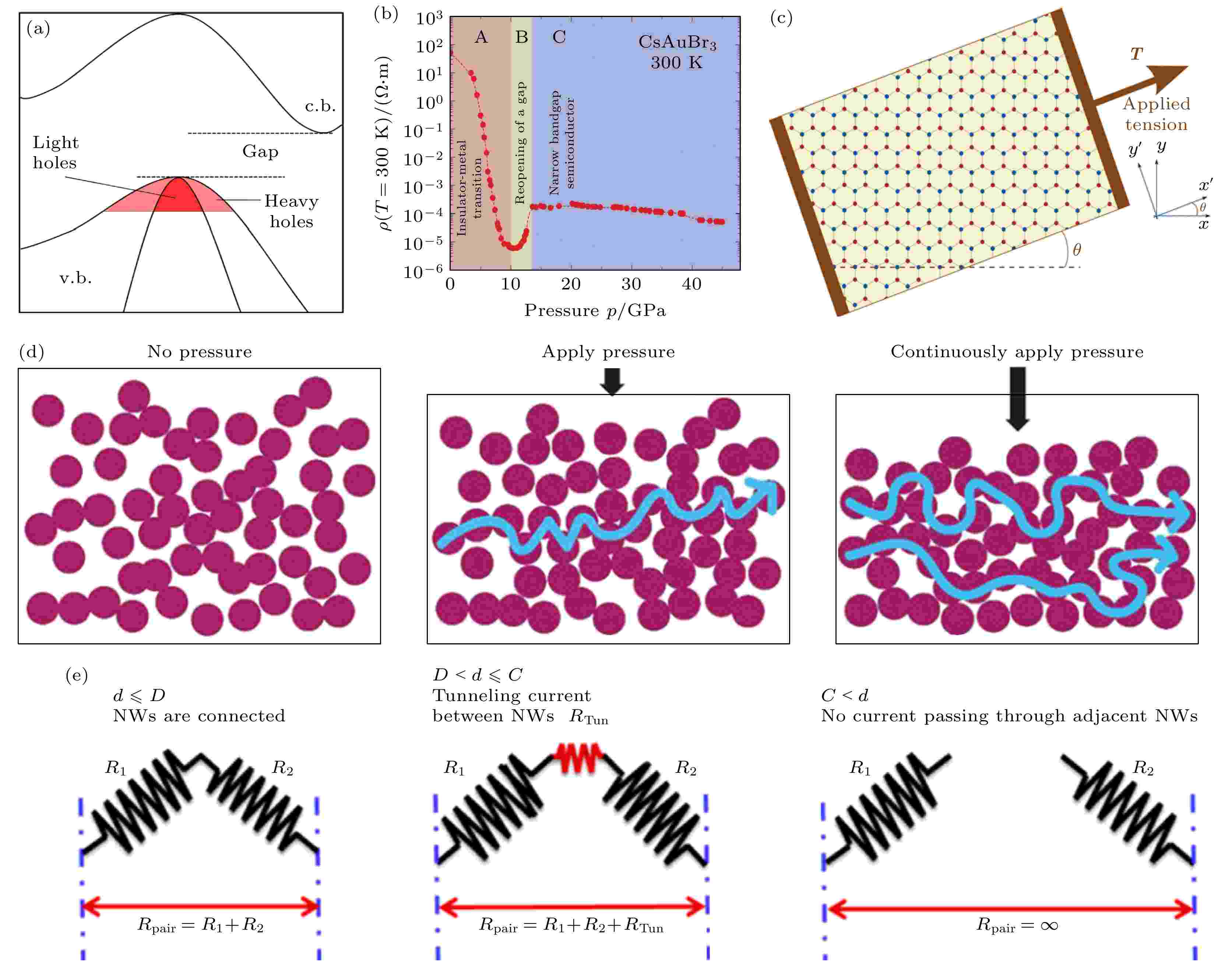
2021, 70 (10): 100703.
doi: 10.7498/aps.70.20210023
Abstract +
In recent years, the flexible piezoresistive pressure sensor has attracted widespread attention due to the trend of improved wearable electronics applied to the field of electronic skin, disease diagnosis, motion detection and health monitoring. Here in this paper, the latest progress of the exploitation of flexible piezoresistive pressure sensors is reviewed in terms of sensing mechanism, selection of sensing materials, structural design and their advanced application. Firstly, the sensing mechanism of piezoresistive pressure sensors is generally introduced from the band structure of semiconductor materials, seepage theory and tunneling effect of conductive polymer composites and changes in interface contact resistance. Based on these sensing mechanisms, various flexible piezoresistive pressure sensors with high sensitivity, broad sensing range and fast response time have been developed. The selection of composition materials and microstructural design in flexible piezoresistive pressure sensor to implement the optimization of sensing performance are emphatically presented in this review. The composition materials including organic polymer material and inorganic nanomaterial based on two-dimensional (2D) materials such as graphene and MXene are intensively exhibited. In addition to the above characteristics, these kinds of pressure sensors exhibit high mechanical reversibility and low detection limit, which is essential for detecting the minor motions like respiratory rate and pulse. Moreover, the well-designed structures applied to the composition analysis are also overviewed, such as the sea urchin-like structure, spongy porous structure and regular structure. Various designed structures provide further properties like stability for the flexible pressure sensor. However, comparing with traditional pressure sensor, the mass production and application of flexible pressure sensor are confronting several barriers, like the high cost of raw materials and relatively complex manufacturing processes. How to achieve the low cost and low energy consumption simultaneously on the basis of excellent performance is still a challenge to expanding the applications of flexible pressure sensor. Novel sensing mechanism, functional materials and synthetic integration are expected to be developed in the future. And also, the potential application of flexible pressure sensor will be further expanded after endowing it with more functions.
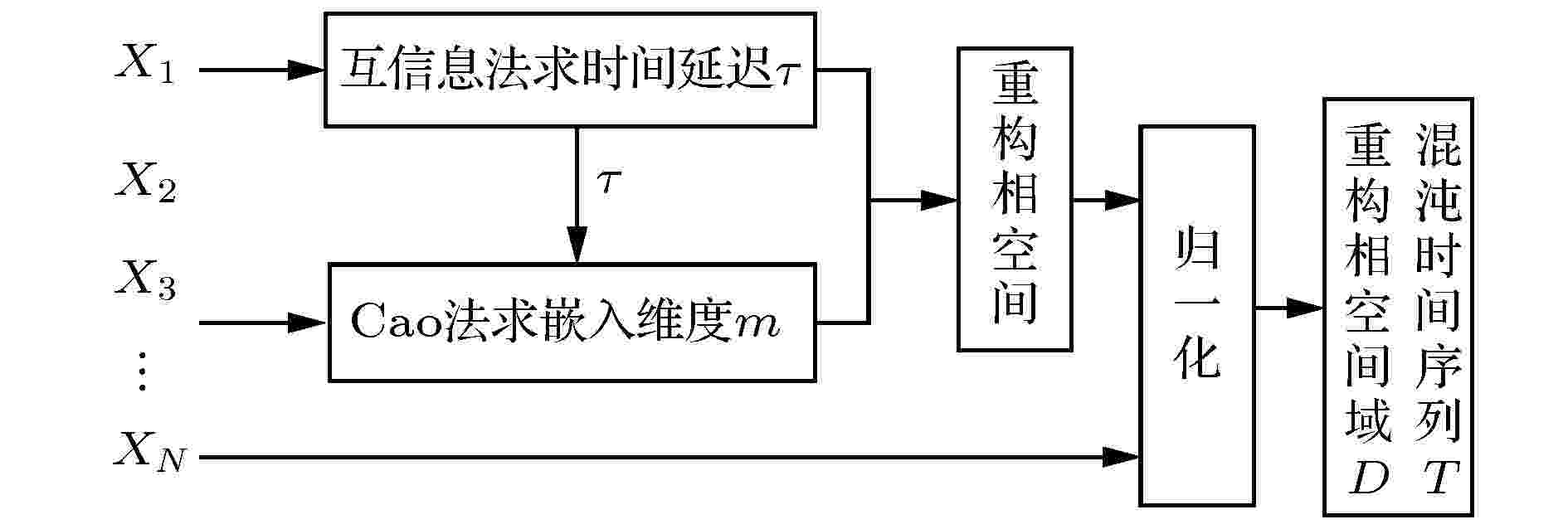
2021, 70 (1): 010501.
doi: 10.7498/aps.70.20200899
Abstract +
Chaotic time series forecasting has been widely used in various domains, and the accurate predicting of the chaotic time series plays a critical role in many public events. Recently, various deep learning algorithms have been used to forecast chaotic time series and achieved good prediction performance. In order to improve the prediction accuracy of chaotic time series, a prediction model (Att-CNN-LSTM) is proposed based on hybrid neural network and attention mechanism. In this paper, the convolutional neural network (CNN) and long short-term memory (LSTM) are used to form a hybrid neural network. In addition, a attention model with softmax activation function is designed to extract the key features. Firstly, phase space reconstruction and data normalization are performed on a chaotic time series, then convolutional neural network (CNN) is used to extract the spatial features of the reconstructed phase space, then the features extracted by CNN are combined with the original chaotic time series, and in the long short-term memory network (LSTM) the combined vector is used to extract the temporal features. And then attention mechanism captures the key spatial-temporal features of chaotic time series. Finally, the prediction results are computed by using spatial-temporal features. To verify the prediction performance of the proposed hybrid model, it is used to predict the Logistic, Lorenz and sunspot chaotic time series. Four kinds of error criteria and model running times are used to evaluate the performance of predictive model. The proposed model is compared with hybrid CNN-LSTM model, the single CNN and LSTM network model and least squares support vector machine(LSSVM), and the experimental results show that the proposed hybrid model has a higher prediction accuracy.
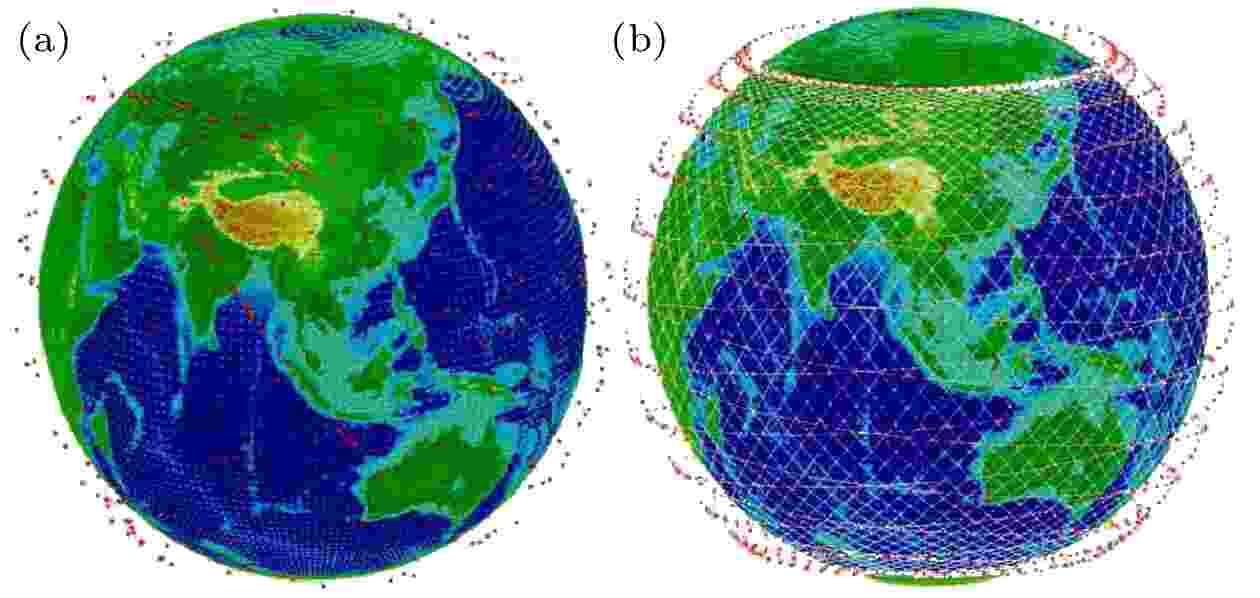
2021, 70 (24): 244303.
doi: 10.7498/aps.70.20211729
Abstract +
The future sixth-generation (6G) wireless network has advantages of global coverage, high spectrum efficiency, low cost, high safety, and higher intelligent level. The 6G technology can create ubiquitous intelligent mobile networks for human society. Terahertz wireless communication has the characteristics of high data transmission rate, low delay, and anti-interference, which may be widely used in 6G technology. This paper mainly introduces the planning vision, development status, and key 6G technology, and analyzes the terahertz devices, channels, communication systems, and the possible development trend of 6G technology.

2021, 70 (3): 034101.
doi: 10.7498/aps.70.20200937
Abstract +
Magnetic dipole theory has been widely and successfully used to explain the leakage magnetic field signals. Because the model parameter such as magnetic dipole density is not easy to quantify, magnetic dipole theory often needs normalizing in application, which is considered to be unsuitable for quantitatively analyzing the magnetic memory signals with the stress effect. In this paper, the theoretical model of magneto-mechanical coupling magnetic dipole is established, which is suitable for analyzing the stress effect on magnetic signals in magnetic memory testing method. Based on the ferromagnetic theory, the equivalent field under the combined action of the applied load and the magnetic field is determined. And then, the magneto-mechanical analytical model is obtained for the isotropic ferromagnetic material under the weak magnetic field based on the first-order magnetization approximation in the weak magnetization state. Under the assumptions of rectangular and V-shaped magnetic charge distribution for the two-dimensional magnetic signal problem, the theoretical analytical models of the magnetic memory signals from the smooth and cracked specimens, and the analytical models of the magnetic memory signal induced by the rectangular and V-shaped surface defect are established. Based on the analytical solution of the proposed magneto-mechanical magnetic dipole theory, the difference in signal between before and after the failure of the specimen, the signal from the rectangular and V-shaped defect, and other influencing factors and laws of the magnetic signal are analyzed in detail. In particular, the influence of stress, environmental magnetic field, defect morphology and size, lift-off effect, specimen size and other factors on magnetic memory signals can be described based on the analytical solution of magneto-mechanical magnetic dipole models proposed in this paper. The proposed analytical model of magneto-mechanical magnetic dipole in this paper is simple and easy to use, and the present research shows that the proposed analytical solution in this paper can explain some basic experimental phenomena and laws in magnetic memory testing experiments. In addition, the precise magneto-mechanical coupling quantitative model combined with the finite element analysis method is still needed for accurately analyzing the magnetic memory signals in experiment.

2021, 70 (9): 095210.
doi: 10.7498/aps.70.20201676
Abstract +
The rapid development of social economy leads the output of solid waste to increase rapidly. The traditional treatment methods, such as landfilling, incineration and composting, are not only inefficient, but also have many limitations, such as secondary pollution and waste of resources. Therefore, it is urgent to explore new solid waste treatment technology. Due to its high efficiency, environmental protection and high energy conversion, the plasma gasification technology has been applied to the harmless treatment of solid waste. This article introduces the background and significance of plasma gasification technology in solid waste treatment, and summarizes the application of plasma gasification technology to different solid waste treatments, the technical level and research progress of plasma gasification of solid waste in the world are described in detail, and the existing problems in the current application of plasma gasification of solid waste are emphatically analyzed. It is pointed out that plasma gasification technology is an effective way to treat solid waste.

2021, 70 (9): 095203.
doi: 10.7498/aps.70.20202233
Abstract +
Plasma technology plays an important role in preparing and processing materials nowadays. This review focuses on the applications of non-thermal plasma (NTP) in the surface treatment and functionalization of materials, including the plasma sources for generating plasmas, NTP techniques and specific application fields. The plasma sources include inductively coupled plasma, capacitively coupled plasma, electron cyclotron resonance plasma, surface wave plasma, helicon wave plasma, atmospheric pressure plasma jet, and dielectric barrier discharge plasma. The NTP techniques for material surface treatment and functionalization include plasma surface grafting and polymerization, plasma enhanced chemical vapor deposition, plasma assisted atomic layer deposition, plasma enhanced reactive ion etching, and plasma assisted atomic layer etching. Specific applications of plasma surface treatment and functionalization cover hydrophilic/hydrophobic surface modification, surface micro-nano processing, biological tissue surface treatment, and catalyst surfaces treatment. Finally, the application prospects and development trends of NTP technology for material surface treatment and functionalization are proposed.
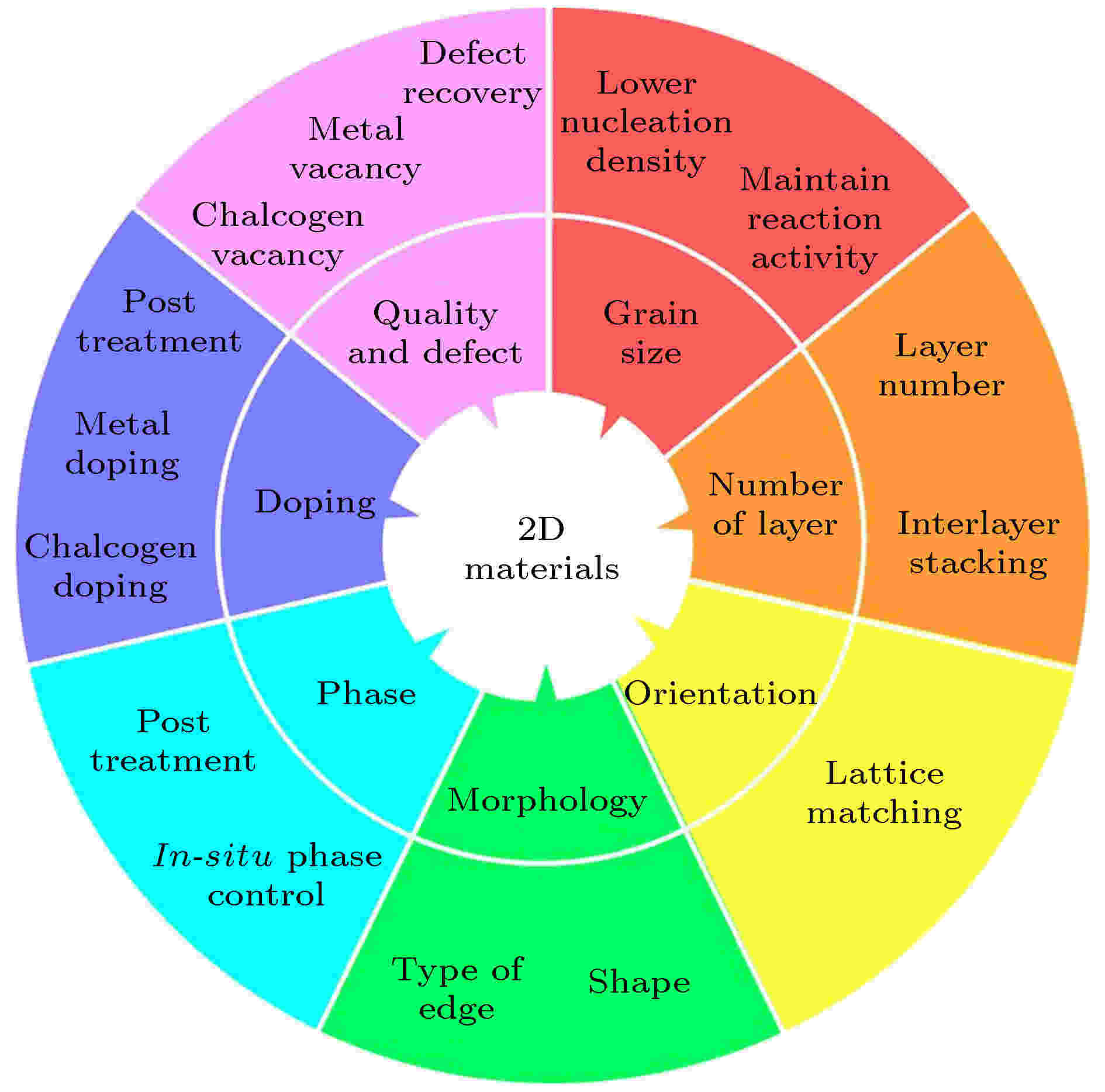
Chemical vapor deposition growth of large-areas two dimensional materials: Approaches and mechanisms
2021, 70 (2): 026802.
doi: 10.7498/aps.70.20201398
Abstract +
Two-dimensional (2D) layered materials have attracted increasing attention in recent years because of their abundant material categories and superior physical/chemical properties. In order to satisfy the requirements for highly integrated devices in the post-Moore era, substantial efforts have been devoted to producing atomically thin 2D materials with large lateral dimensions and high crystalline quality. The controllable synthesis is the precondition of the implementation of large mass producing 2D material in industry. Chemical vapor deposition (CVD) is a powerful method widely used in the synthesis of 2D materials and their hybrid structures. However, it is still challengeable to flexibly and easily grow any 2D materials into large area. Therefore, a systematic understanding of the requirements for controllable growth of different 2D materials are desired. In this review article, we provide a comprehensive discussion on the influencing factors, material transport, nucleation and growth rate in the CVD growth process. Finally, the strategies to further improve the size and quality of 2D materials are prospected.
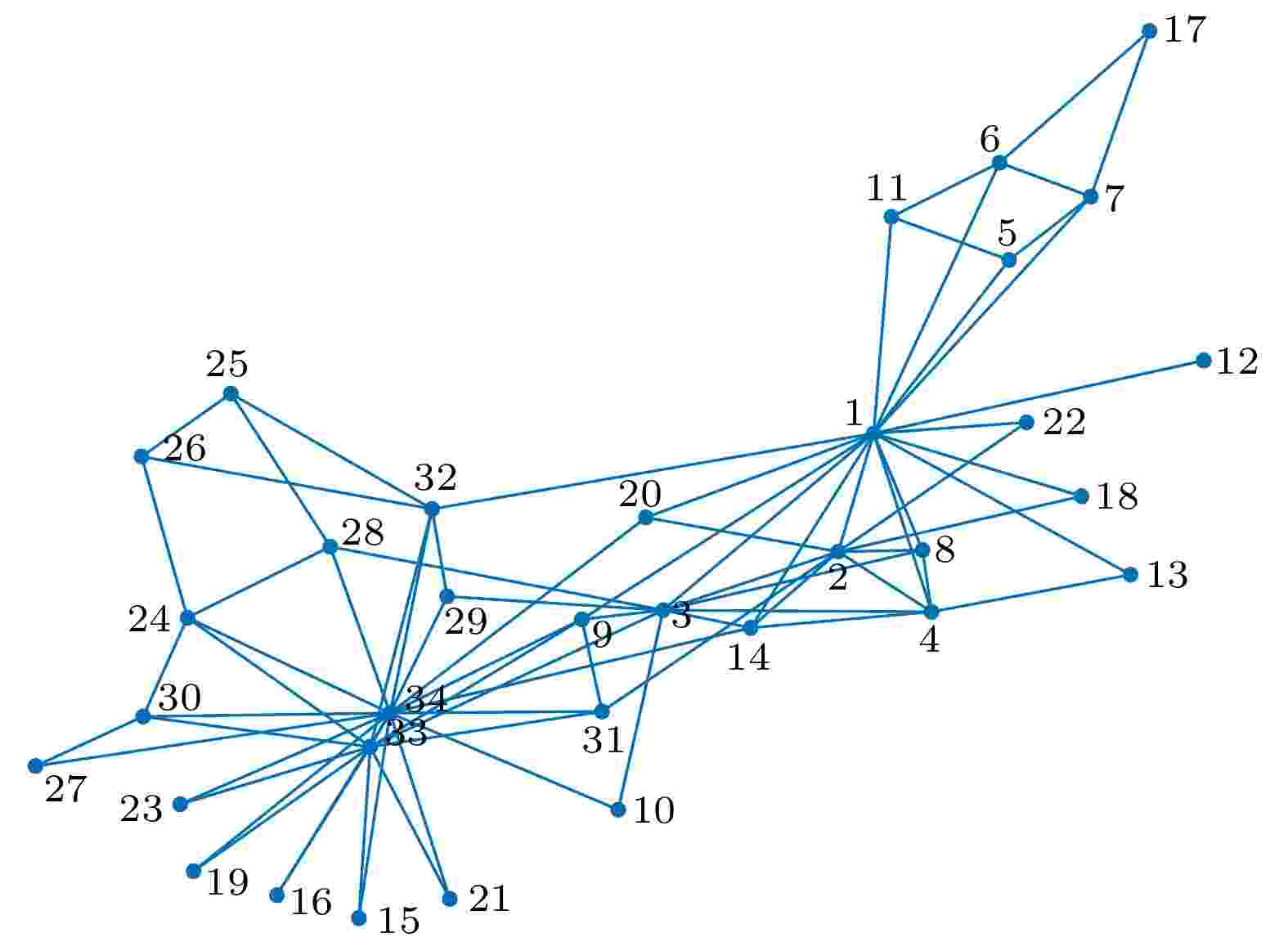
2021, 70 (21): 216401.
doi: 10.7498/aps.70.20210979
Abstract +
Evaluating the importance of nodes in complex networks is an important topic in the research of network characteristics. Its relevant research has a wide range of applications, such as network supervision and rumor control. At present, many methods have been proposed to evaluate the importance of nodes in complex networks, but most of them have the deficiency of one-sided evaluation or too high time complexity. In order to break through the limitations of existing methods, in this paper a novel method of evaluating the importance of complex network nodes is proposed based on Tsallis entropy. This method takes into account both the local and global topological information of the node. It considers the structural hole characteristics and K-shell centrality of the node and fully takes into account the influence of the node itself and its neighboring nodes. To illustrate the effectiveness and applicability of this method, eight real networks are selected from different fields and five existing methods of evaluating node importance are used as comparison methods. On this basis, the monotonicity index, SIR (susceptible-infectious-recovered) model, and Kendall correlation coefficient are used to illustrate the superiority of this method and the relationship among different methods. Experimental results show that this method can effectively and accurately evaluate the importance of nodes in complex networks, distinguish the importance of different nodes significantly, and can show good accuracy of evaluating the node importance under different proportions of nodes. In addition, the time complexity of this method is $ O({n^2}) $ , which is suitable for large-scale complex networks.
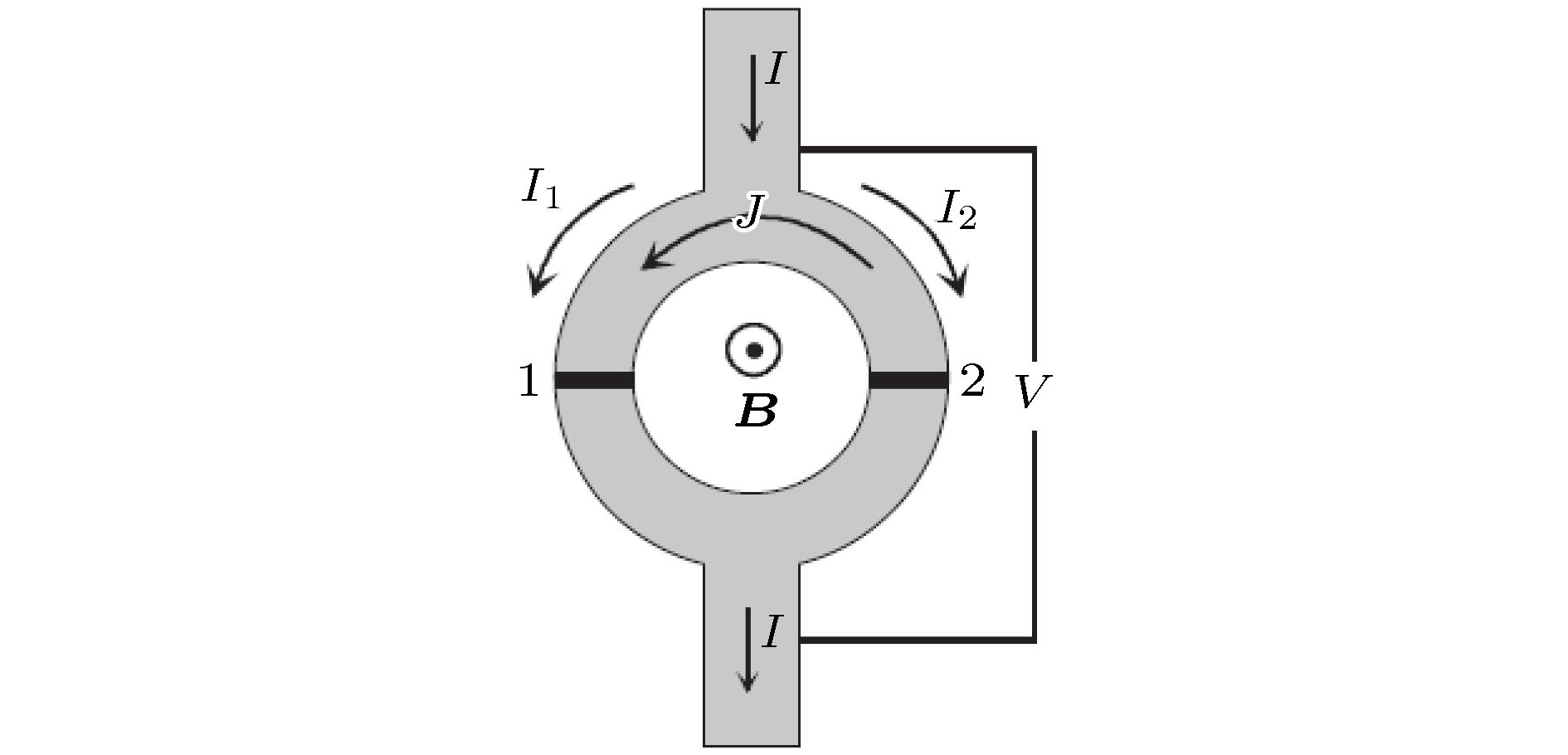
2021, 70 (1): 018502.
doi: 10.7498/aps.70.20202131
Abstract +
Superconductivity is a macroscopic quantum phenomenon. Flux quantization and the Josephson effect are two physical phenomena which can best reflect the macroscopic quantum properties. Superconducting quantum interference device (SQUID) is one type of superconducting devices which uses these two characteristics. SQUID devices are widely used in the sensitive detection of magnetic signals. This paper briefly introduces the background and recent developments of low temperature superconductor and high temperature superconductor SQUID devices.
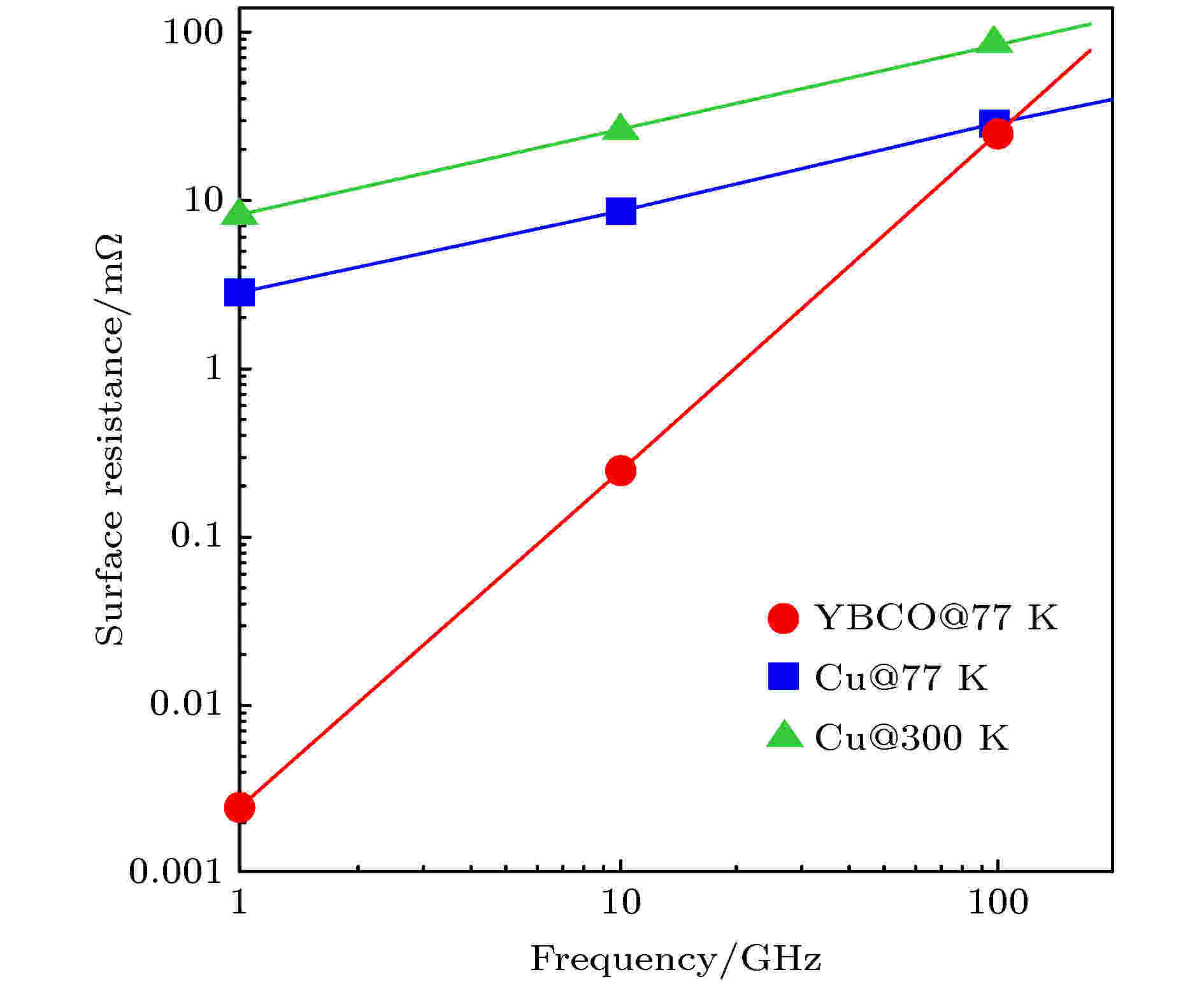
2021, 70 (1): 018501.
doi: 10.7498/aps.70.20202121
Abstract +
It has been nearly 110 years since the discovery of superconductors, and more than 30 years since the discovery of high temperature superconductors (HTS). Great progress has been made in the application of superconducting electronics in the last two decades. HTS microwave devices have shown much higher perfomance than the traditional ones and have found their ways to the industry applications in mobile communication, radar, and special communication applications. Owing to the ultrahigh sensitivity to magnetic fields and currents, superconducting quantum interference devices (SQUIDs) have been used as the irresplacible sensors in geological surveying, magnetic resonanc imaging, biomagnetic imaging, and other areas. The sensitivity of superconducting radiation detectors such as superconducting SIS mixer, superconducting hot electron bolometer, superconducting transition edge sensor, superconducting nanowire single photon detector, and superconducting microwave kinetic inductance detector are near the quantum limitation. They are now key technology in geophysics, astrophysics, quantum information science, biomedicine, and so on. Superconducting Josephson parametric amplifier has become a key element for superconducting quantum computing. Superconducting integrated circuit has been included in the international roadmap for devices and systems, and shows that having the potential to become one of the mainstreams for post-Moore information processing technology. In metrology, superconducting Josephson effect and Josephson junction array devices have been widely used in the redefinition of quantum voltage reference and basic units of the International system of Units. Superconducting electronics plays an important role in the current quantum information technology boom, which in turn promotes the development of superconducting electronics. This review will brief introduce the research and application of superconducting electronics in China in recent years.
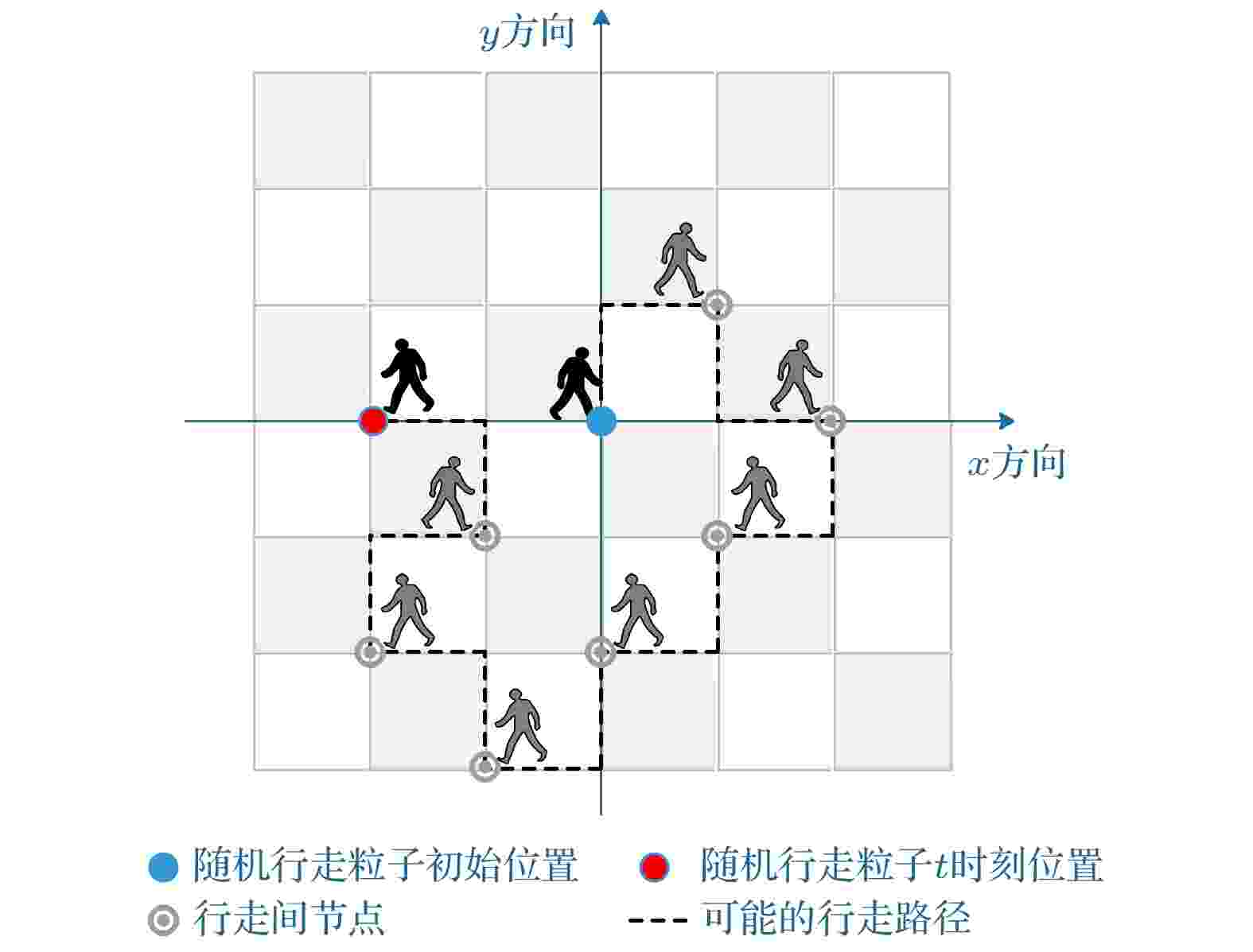
2021, 70 (23): 230302.
doi: 10.7498/aps.70.20211255
Abstract +
In recent years, image encryption technology has attracted much attention. As people pay more attention to communication privacy and network security, the requirements for information encryption technology are more stringent. As one of the information carriers, images are valuable for carrying the effectiveness and vividness of the information. This paper proposes a color image encryption algorithm based on DNA encoding and alternating quantum random walk. Quantum random walk is an excellent cryptographic tool that participates in all parts of the algorithm process, and DNA encoding is used as the core encryption method to complete the algorithm. This article describes the encryption and decryption process in detail, and conducts simulation experiments to verify and analyze the results of the proposed algorithm. In the simulation stage, we design the simulation key parameters, encode the color image encryption and decryption experiments, and carry out related analysis. The experimental results show that the color image encryption algorithm proposed in this paper can perform safe and effective color image encryption. The correlation analysis shows that the image histogram after encryption is stable, the pixel correlation coefficient approaches 0, and the key space is ${2^{ 128 }} $ , the three-channel information entropy reaches more than 7.997, which can resist statistical attacks, brute force attacks and other attack methods. In addition, DNA coding has unique biological characteristics in addition to the novel coding and calculation methods, which provide new ideas and directions for cryptographic research.

2021, 70 (6): 068101.
doi: 10.7498/aps.70.20201917
Abstract +
Atomic-scale fabrication is an effective way to realize the ultra-smooth surfaces of semiconductor wafers on an atomic scale. As one of the crucial manufacturing means for atomically precise surface of large-sized functional materials, chemical mechanical polishing (CMP) has become a key technology for ultra-smooth and non-damage surface planarization of advanced materials and devices by virtue of the synergetic effect of chemical corrosion and mechanical grinding. It has been widely used in aviation, aerospace, microelectronics, and many other fields. However, in order to achieve ultra-smooth surface processing at an atomic level, chemical corrosion and mechanical grinding methods commonly used in CMP process require some highly corrosive and toxic hazardous chemicals, which would cause irreversible damage to the ecosystems. Therefore, the recently reported green chemical additives used in high-performance and environmentally friendly CMP slurry for processing atomically precise surface are summarized here in this paper. Moreover, the mechanism of chemical reagents to the modulation of materials surface properties in the CMP process is also analyzed in detail. This will provide a reference for improving the surface characteristics on an atomic scale. Finally, the challenges that the polishing slurry is facing in the research of atomic-scale processing are put forward, and their future development directions are prospected too, which has profound practical significance for further improving the atomic-scale surface accuracy.

2021, 70 (10): 106801.
doi: 10.7498/aps.70.20201918
Abstract +
Liquid droplets impacting on the solid surface is an ubiquitous phenomenon in natural, agricultural, and industrial processes. The maximum spreading diameter of a liquid droplet impacting on a solid surface is a significant parameter in the industrial applications such as inkjet printing, spray coating, and spray cooling. However, former models cannot accurately predict the maximum spreading diameter on a superhydrophilic surface, especially under low Weber number (We). In this work, the spreading characteristics of a water droplet impacting on a superhydrophilic surface are explored by high-speed technique. The spherical cap of the spreading droplet, gravitational potential energy, and auxiliary dissipation are introduced into the modified theoretical model based on the energy balance. The model includes two viscous dissipation terms: the viscous dissipation of the initial kinetic energy and the auxiliary dissipation in spontaneous spreading. The energy component analysis in the spreading process shows that the kinetic energy, surface energy, and gravitational potential energy are all transformed into the viscous dissipation on the superhydrophilic surface. The transformation of surface energy into viscous dissipation is dominant at lower We while the transformation of kinetic energy into viscous dissipation is dominant at higher We. It is found that the gravitational potential energy and auxiliary dissipation play a significant role in spreading performance at low We according to the energy component analysis. Moreover, the energy components predicted by the modified model accord well with the experimental data. As a result, the proposed model can predict the maximum spreading diameter of a droplet impacting on the superhydrophilic surface accurately. Furthermore, the model proposed in this work can predict the maximum spreading diameter of the droplet impacting on the hydrophilic surface and hydrophobic surface. The results of this work are of great significance for controlling droplet spreading diameter in spray cooling and falling film evaporation.

2021, 70 (4): 040201.
doi: 10.7498/aps.70.20201520
Abstract +
Based on laser-induced breakdown spectroscopy and machine learning algorithms, ginseng origin identification model is established by principal component analysis algorithm combined with back-propagation (BP) neural network and support vector machine algorithm to analyze and identify ginseng from five different origins in northeast China (Daxinganling, Ji’an, Hengren, Shizhu, and Fusong). The experiment collects a total of 657 groups of laser-induced breakdown spectral data from five origins of ginseng at 200–975 nm, reduces the background continuous spectrum of the original spectral data by moving window smoothing method, labels the ginseng LIBS spectral elements according to the American NIST atomic spectral database. Eight characteristic spectral lines of 7 elements Mg, Ca, Fe, C, H, N and O are selected for principal component analysis according to characteristic spectral selection conditions. The cumulative contribution rate of the first three principal components of the original spectral data reaches 92.50%, which represents a large amount of information about the original ginseng LIBS spectrum, and the samples show a good aggregation and classification in the principal component space. After dimension reduction, the first three principal components are randomly selected in a ratio of 2 to 1 and divided into 438 test sets and 219 training sets, which are used as the input values of the classification algorithm. The experimental results show that the principal component analysis combined with the BP neural network algorithm and support vector machine algorithm can correctly identify 217 and 218 spectra of 219 spectra of the test set respectively, and the average recognition rate is 99.08% and 99.5% respectively. The modeling time of BP neural network is 11.545 s shorter than that of the support vector machine. Both models misjudged Ji'an Ginseng as Shi zhu ginseng, and the reason for this misjudgment is that the normalized intensity of H and O under Ca element ion emission spectrum are similar due to the proximity of Ji 'an to Shi Zhu in geographical environment. The study presented here demonstrates that laser-induced breakdown spectroscopy combined with machine learning algorithm is a useful technology for rapid identification of ginseng origin and is expected to realize automatic, real-time, rapid and reliable discrimination.

2021, 70 (16): 160702.
doi: 10.7498/aps.70.20210685
Abstract +
Laser spectroscopy based techniques have the advantages of high sensitivities, high selectivities, non-invasiveness and in situ, real-time observations. They are widely used in numerous fields, such as environmental monitoring, life science, medical diagnostics, manned space flight, and planetary exploration. Owing to the merits of low cost, compact volume and strong environment adaptability, quartz-enhanced photoacoustic spectroscopy (QEPAS) based sensing is an important laser spectroscopy-based method of detecting the trace gas, which was invented in 2002. Detection sensitivity is a key parameter for gas sensors because it determines their real applications. In this paper, focusing on the detection sensitivity, the common methods for QEPAS are summarized. High power laser including amplified diode laser by erbium doped fiber amplifier (EDFA), and quantum cascade laser are used to improve the excitation intensity of acoustic wave. The absorption line of gas molecules located at the fundamental bands of mid-infrared region is adopted to increase the laser absorption strength. Micro-resonator is employed to enhance the generated acoustic pressure by forming a standing wave cavity. Quartz tuning forks (QTFs) with low resonant frequency are used to increase the accumulation time of acoustic energy in itself. Multi-pass strategy is utilized to amplify the action length between laser beam and target gas in the prongs of QTF. The advantages and disadvantages of the above methods are discussed respectively. For the issues in real applications, the all-fiber strucure in near-infared region and mid-infrared region and miniaturization using three-dimensional(3D) printing technique for QEPAS sensor are summarized. A QEPAS technique based multi-gas sensor is used to quantify the concentration of carbon monoxide (CO), carbon dioxide (CO2), hydrogen cyanide (HCN), and hydrogen chloride (HCl) for post-fire cleanup aboard spacecraft, which is taken for example for the real application.Finally, the methods of further improving the sensitivity of QEPAS sensor are proposed.
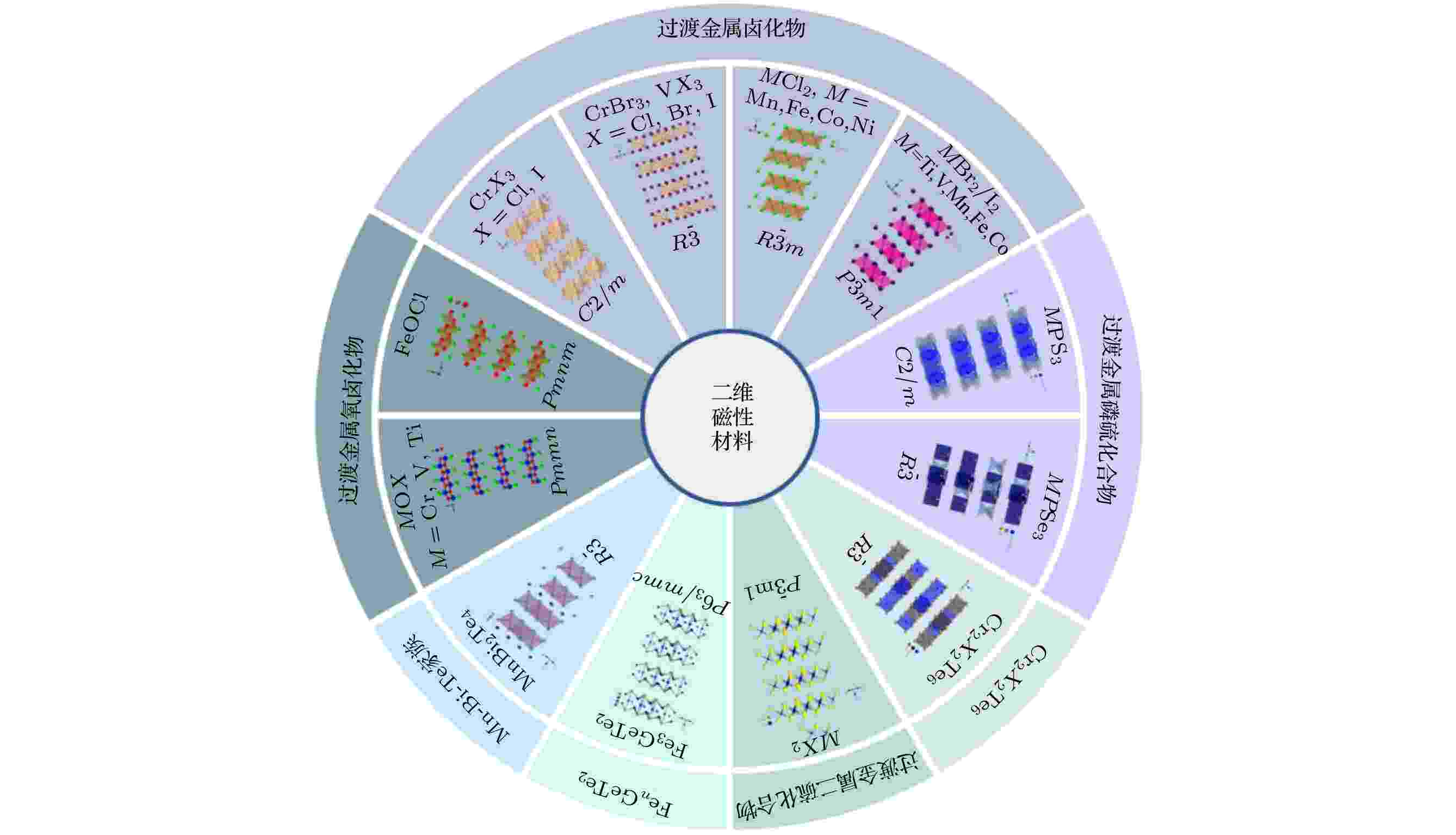
2021, 70 (12): 127801.
doi: 10.7498/aps.70.20202146
Abstract +
Two-dimensional (2D) materials represented by graphene and molybdenum disulfide (MoS2) have attracted much attention in recent years due to their advantages in electrical, thermal, optical and mechanical properties. As a branch of 2D materials, 2D magnetic materials have special properties such as magnetic anisotropy and single-layer magnetic order. Especially, their magnetism can also be controlled by a variety of physical fields, and it possesses various physical properties and potential applications. Therefore, they have received widespread attention of researchers gradually. In this article, we summarize the types, synthesis methods, basic characteristics and characterization methods of 2D magnetic materials in detail, and the magnetism controlling of 2D magnetic materials as well. Finally, a simple outlook on the research directions and future challenges of 2D magnetic materials is given.

2021, 70 (4): 040304.
doi: 10.7498/aps.70.20201522
Abstract +
The gravity field is one of the basic physical fields of the Earth. Dynamic measurements could improve the efficiency of gravity surveying and mapping, and have very important applications in the fields of geological survey, geophysics, resource exploration, inertial navigation and so on. Currently, dynamic gravity measurements are mostly based on relative measurements. The dynamic relative gravimeters have the problem of zero drift, which affects the measurement performance. Dynamic absolute gravimeters can provide synchronous and co-site calibration for relative gravimeters and solve the problem of long drift. Therefore dynamic absolute gravimeters have attracted much attention. Based on a homemade atomic gravimeter and an inertial stable platform, a system of absolute gravity dynamic measurement has been built on a ship. The dynamic measurement experiments of absolute gravity under the state of ship-borne mooring have been carried out. It is found that the frequency of vibration noises of this ship is around 0.2 Hz, and the amplitude is about 1 Gal. In the case of harsh environment, the temperature and humidity of the used container have been controlled to be 25 ℃ and 70% via the air conditioning. Then, a continuous gravity measurement of 5 hour has been taken, and the peak to peak value of 80 mGal has been achieved. The values of gravity have no drifts at all during the measurements. Besides, the sensitivity of gravity measurement has been evaluated to be 16.6 mGal/Hz–1/2 under the environment of ship-borne mooring. A resolution of 0.7 mGal could be reached with an integration time of 1000 s. The stability of this system has been estimated after the measurement of absolute gravity for two weeks, and the change of absolute gravity values is about 0.5 mGal. Finally, in order to evaluate the accuracy of the dynamic measurement of absolute gravity, the measured average value of absolute gravity at ship-borne has been compared with the value of the high-precision absolute gravity reference point of the pier, and the results are estimated to be (–0.072 ± 0.134) mGal. The results of this paper could provide a new solution for the simultaneous and co-site calibration of the ocean relative gravimeter on the same ship.

2021, 70 (6): 068902.
doi: 10.7498/aps.70.20201486
Abstract +
In this paper, the influence of opinion dynamics on rumor propagation is studied by introducing the mechanism of stifler’s comments on rumors into the susceptible-infected-recovered (SIR) model. In this model, individuals can form a group together with their direct neighbors, through which the spreader can spread rumors, and the stiflers can express opinions and refute the rumors. The mechanism of rumor refuting can not only reduce the acceptance rate of the ignorant to rumor, but also increase the transition probability of the spreader to be a stifler. In this paper, we use the Erdös-Rényi (ER) random network, scale-free network and real social network as the underlying interaction structure to study the influence of stifler’s silence probability on the rumor spreading dynamics. First of all, we find that the process of rumor propagation can be roughly divided into two stages, i.e., the early stage of free propagation of rumors and the later stage of checks and balances between the stiflers and the spreaders, respectively. Secondly, it is found that the rumor will break out with the increase of stifler’s silence probability. Under a threshold of rumor outbreak, the increase of silence probability will not lead the number of spreaders to significantly increase, but will cause more ignorance to perceive the rumor and quickly turn into spreaders, and then change into stiflers under the guidance of other stiflers. When the silence probability reaches a threshold, the stiflers will not be able to control the spread of rumors, which will lead the number of stiflers to decrease and the rumors to break out. Finally, the early stage of rumor propagation in scale-free networks is shorter than that of random network, which makes rumor more difficult to break out. Our model comprehensively considers the influence of opinion dynamics on the spreading of rumors and more realistically simulates the rumor diffusion process, which provides a useful insight for the rumor control in real-world social networks.
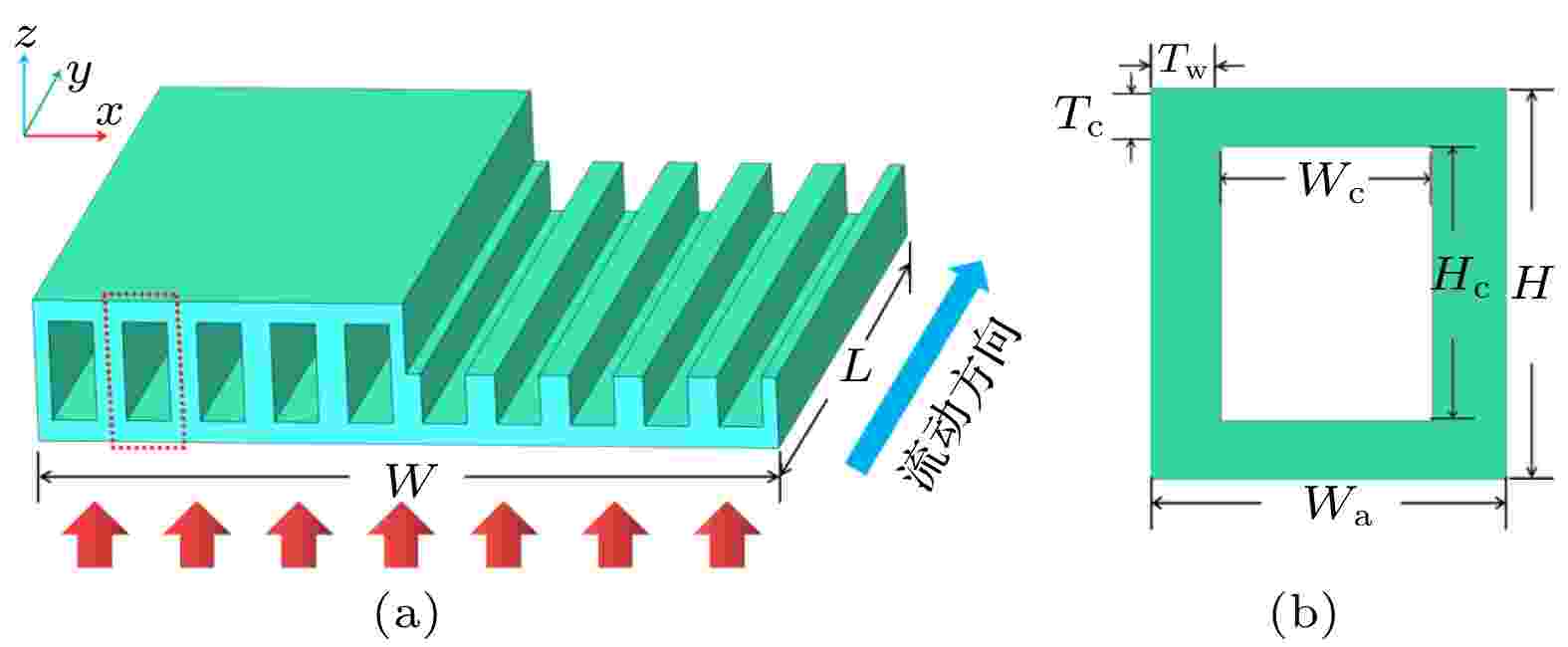
2021, 70 (10): 104401.
doi: 10.7498/aps.70.20201802
Abstract +
Microchannel heat sinks have important applications in integrated circuits, but the current traditional long straight microchannel heat dissipation process causes uneven temperature and low heat dissipation efficiency. In this paper, a periodic split-flow microstructure is designed and integrated with traditional microchannels to form a periodic split-flow microchannel heat sink. Numerical simulation is used to study the influence of the number, the arrangement and structural parameters of microstructures in a single microchannel on its thermal performance. The simulation results show that the split-flow microstructure can increase the heat exchange area, break the original laminar boundary layer, promote the mixing of cold/hot coolant, and significantly improve the heat dissipation performance of the microchannel. Through comparative experiments, 9 groups are finally determined as the optimal number of microstructures in a single microchannel. At a heat flux of 100 W/cm2, when the coolant flow rate at the inlet is 1.18 m/s, after 9 groups of microstructures are added into a single microchannel, the maximum temperature drops by about 24 K and the thermal resistance decreases by about 44%. The Nusselt number is increased by about 124%, and the performance evaluation criterion (PEC) reaches 1.465. On this basis, the microstructure adopts a staggered gradual periodic arrangement to avoid the long-distance non-microstructure section between the two groups of microstructures. The turbulence element that gradually widens along the flow direction makes the coolant fully utilized. This results in a reduction in the high/low temperature zone and alleviates the temperature gradient that exists along the flow direction of the heat dissipation surface, and the pressure drop loss is also reduced to a certain extent compared with the pressure drop in the uniform arrangement, and the comprehensive thermal performance is further improved. It shows broad application prospects in the field of high-power integrated circuits and electronic cooling.
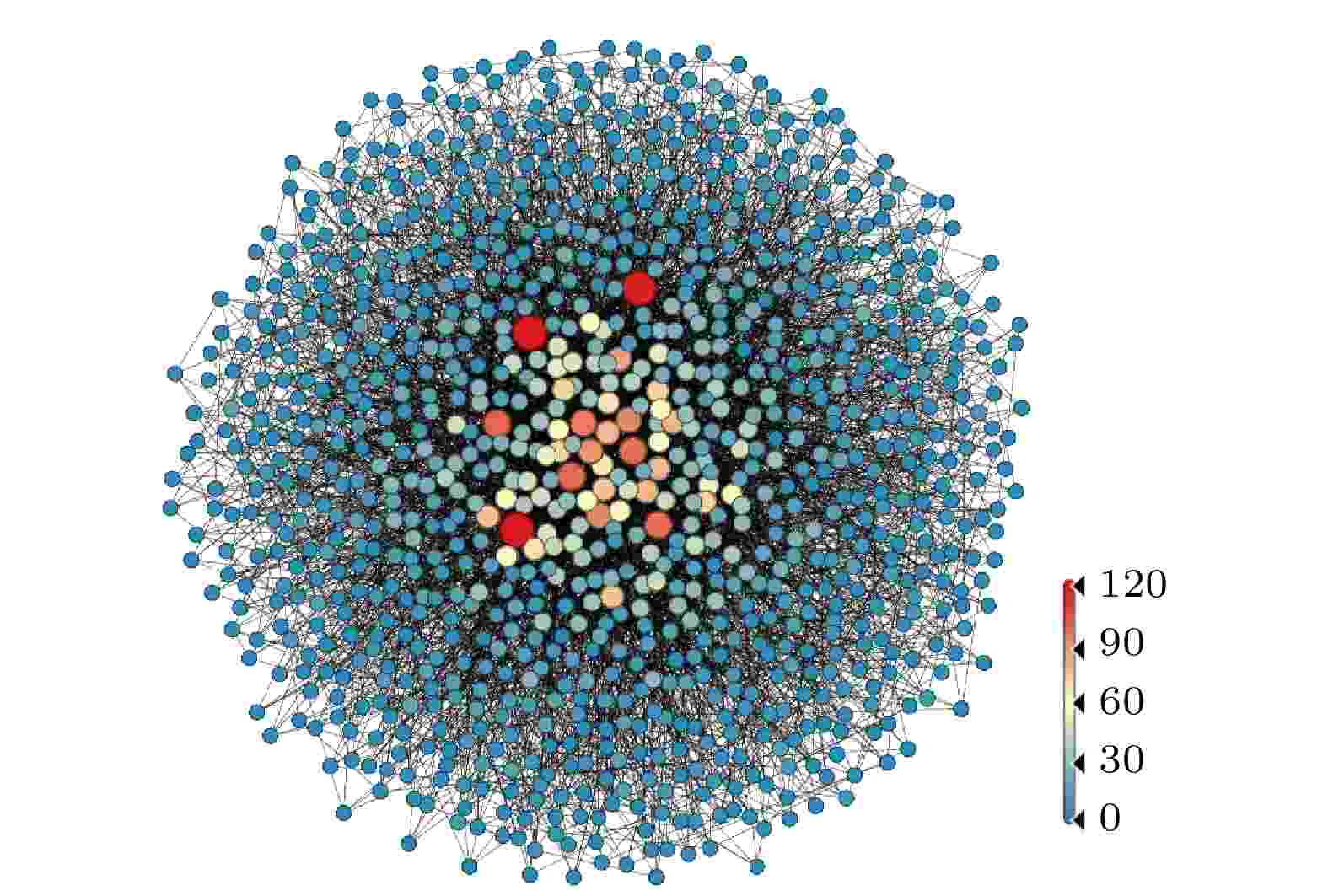
2021, 70 (5): 056401.
doi: 10.7498/aps.70.20200872
Abstract +
Controlling a complex network to achieve a certain desired objective is an important task for various interacting systems. In many practical situations, it is expensive and unrealistic to control all nodes especially in a large-scale complex network. In order to reduce control cost, one turns to control a small part of nodes in the network, which is called pinning control. This research direction has been widely concerned and much representative progress has been achieved so far. However, to achieve an optimal performance, two key questions about the node-selection scheme remain open. One is how many nodes need controlling and the other is which nodes the controllers should be applied to. It has been revealed in our recent work that the effectiveness of node-selection scheme can be evaluated by the smallest eigenvalue $ {\rm{\lambda }}_{1} $ of the grounded Laplacian matrix obtained by deleting the rows and columns corresponding to the pinned nodes from the Laplacian matrix of the network. As a further study of our previous work, we study node selection algorithm for optimizing pinning control in depth, based on the proposed index $ {\rm{\lambda }}_{1} $ and its spectral properties. As is well known, it is an NP-hard problem to obtain the maximum of $ {\rm{\lambda }}_{1} $ by numerical calculations when the number of pinned nodes is given. To solve this challenge problem, in this paper a filtering algorithm is proposed to find most important nodes, which results in an optimal $ {\rm{\lambda }}_{1} $ when the number of pinned nodes is given. The method can be applied to any type of undirected networks. Furthermore, in this paper we propose the concept of node-set importance in complex networks from the perspective of network control, which is different from the existing definitions about node importance of complex networks: The importance of a node set and the selected nodes in this paper depends on the number of pinned nodes; if the number of pinned nodes is different, the selected nodes will be different. The concept of node-set importance reflects the effect of nodes’ combination in a network. It is expected that the obtained results are helpful in guiding the optimal control problems in practical networks.

- 1
- 2
- 3
- 4
- 5
- ...
- 40
- 41













